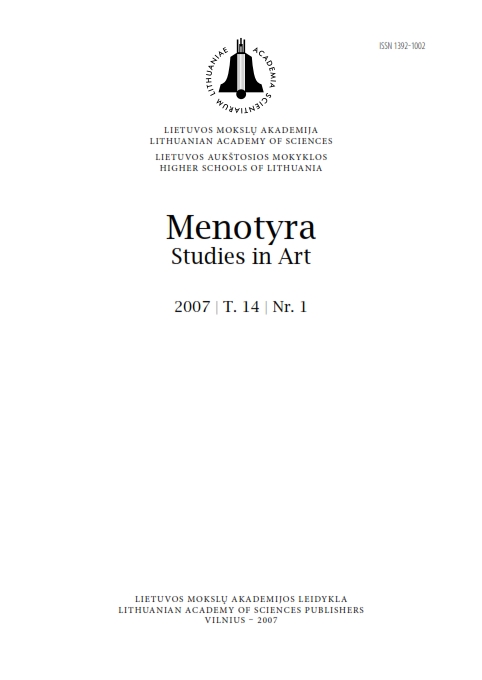Styginių muzikos instrumentų semantika Senajame Testamente
The semantics of string instruments in the Old Testament
Author(s): Kamilė RupeikaitėSubject(s): Music, Semantics, Biblical studies
Published by: Lietuvos mokslų akademijos leidykla
Summary/Abstract: The rich world of musical imagery reflected in the most vivid narratives of the Scriptures is of great importance for the many-sided expression of the biblical thought. The string instruments – kinnòr , a lyre-type instrument – and the lyre- or harp-type nèvel were the tools of the Levites, professional musicians of the Temple, and are united by the fact that they symbolize joy, elemental force and were used in the daily rituals. They were also used in secular music, thus it is possible to consider them as “mediators” between godliness and humaneness, which mark the interaction of these two poles and comprise a series of conflicting characteristics. One may draw an analogy between the derivation of the name of the nevel from “a vessel” or “a jar” and the explorations of R. Apanavičius (1995) that focus on the etymology of Baltic and Scandinavian instruments, which seems to point to household utensils as the prototypes of instruments. Kinnor and nevel are the only instruments that are associated in the Bible with the musicality of poetical texts. They are referred to in fourteen psalms in similar textual and notional contexts, thus bringing to light their uniformly preserved semantics. The search for the Lithuanian equivalents of the biblical strings is complex and varied, starting with the first work of J. Bretkūnas (1590). In both the Catholic translations based on the Vulgate and the Protestant translations based on secondary sources, the terms used to name kinnor and nevel are identical and comprise four out of the five principal kinds of chordophones – the harp, the lute, the zither and the lyre. Such a variety is the result of the erroneous typology that appeared in the first historical translations. The most systematic interpretation of kinnor and nevel as the lyre and the harp, representing different types of string instruments, is presented in A. Jurėnas’ and A. Rubšys’ translations from the Hebrew original.
Journal: Menotyra
- Issue Year: 14/2007
- Issue No: 1
- Page Range: 1-15
- Page Count: 15
- Language: Lithuanian

